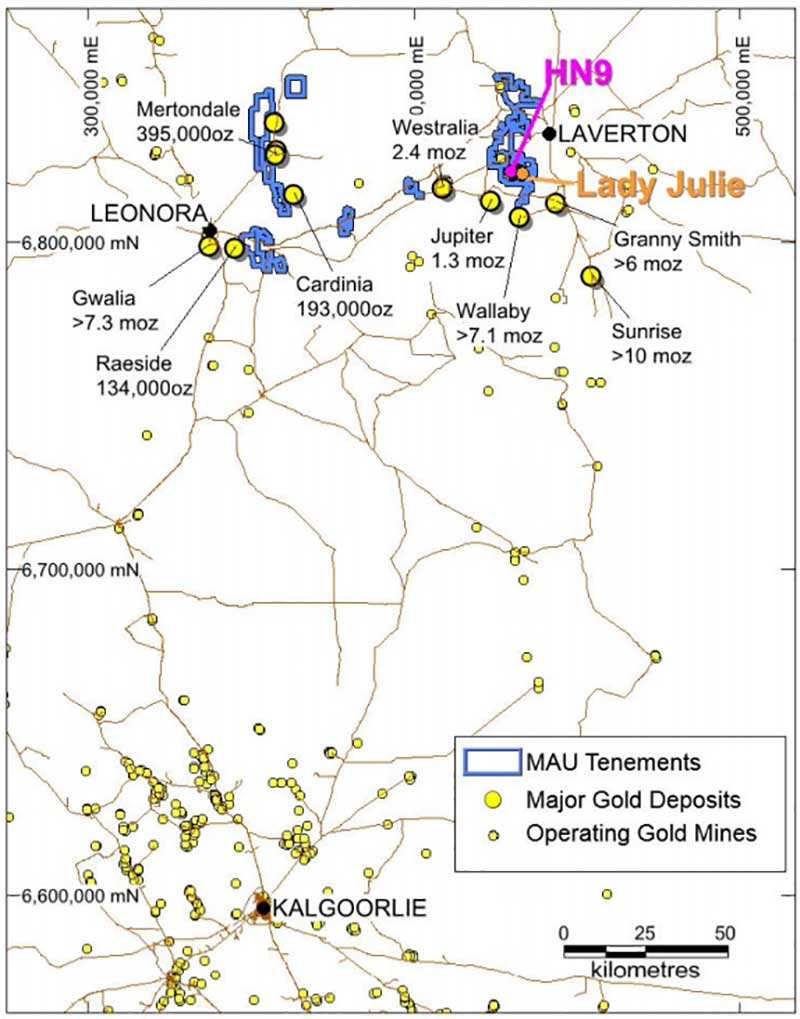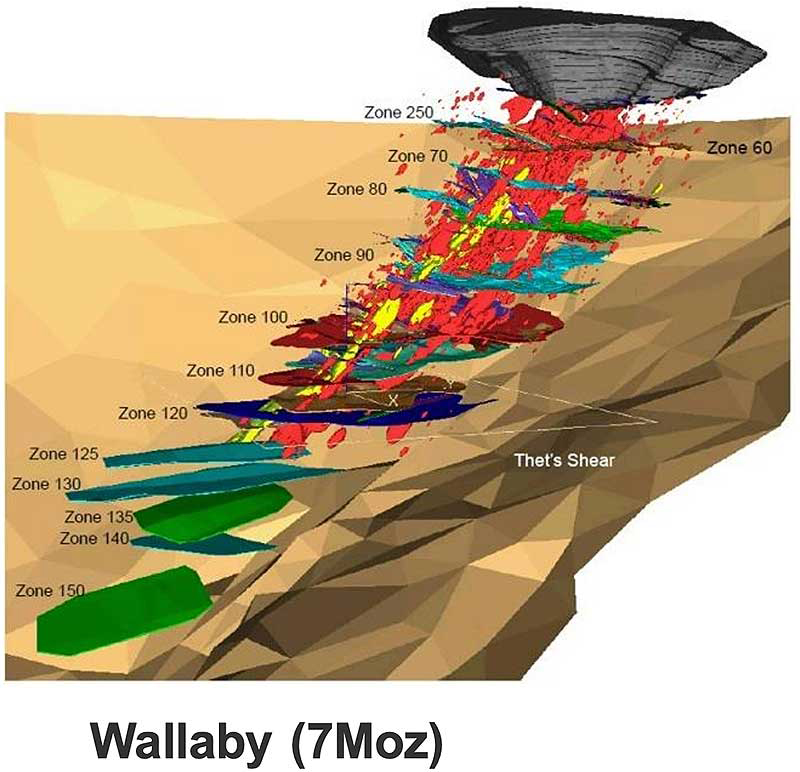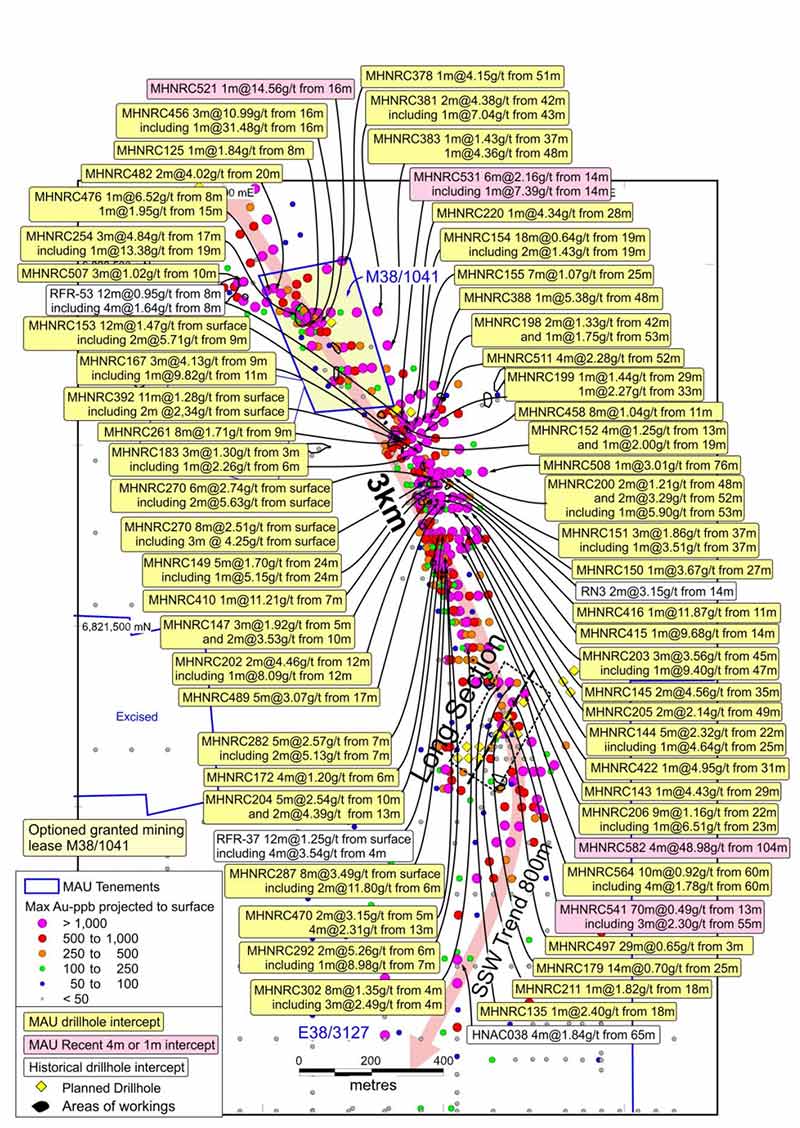You might be interested in
Mining
Magnetic Resources lands $12m in oversubscribed placement to fund rapid expansion of Lady Julie gold project
Mining
There’s no better time to open Australia’s newest gold mine as prices scale record highs
Mining
Mining
Special Report: Explorer Magnetic Resources is methodically uncovering the massive potential of Hawks Nest 9, a discovery which could become the Laverton region’s next multi-generational gold mine.
Former iron ore play Magnetic (ASX:MAU) began picking up greenfields (untouched) exploration ground around WA’s gold-rich Laverton and Leonora districts in 2016.
These project areas rub shoulders with mammoth gold deposits like Wallaby (+7.1moz), Sunrise Dam (+10moz), Granny Smith (+6moz) Gwalia (+7.3moz), Westralia (+2.4moz) and Jupiter (+1.3moz).

That’s what Magnetic was looking for – the next +1moz gold deposit using the geological and geophysical characteristics of these large neighbouring deposits as a ‘template’.
Incredibly, this ground had been completely overlooked up to this point; Magnetic just had to claim it.
Storied geophysicisr and Magnetic managing director George Sakalidis has a history of seeing value where everyone else sees ‘moose pasture’.
“People say, ‘that looks like rubbish, why did you pick it up’ and then ‘bang’,” Sakalidis told Stockhead.
“I find orebodies using aeromagnetics where people have said there’s nothing. I’ve done it many times.”
That includes the discovery of the ~300,000oz Three Rivers gold deposit in the Peak Hill area; an area where no gold had been found previously.
Sakalidis discovered and outlined the 13km long very high-grade zircon enriched Boonanarring mineral sands deposit in WA for freshly minted miner Image Resources (ASX:IMA).
He was also involved in the tenement applications over the very high-grade Silver Swan nickel deposit near Kalgoorlie, and the Monty copper-gold deposit adjacent to Sandfire’s (ASX:SFR) DeGrussa mine.
By late 2017, Magnetic had acquired 375sqkm of ground in the Leonora and Laverton regions. The company soon defined 2.5km of gold targets at the Hawks Nest project through early stage exploration work.
“The ground magnetics seemed to show up these [underground] structures trending northwest to southeast,” Sakalidis says.
“There were quite of few of those, and we could see that they were lining up with small, shallow historic workings.”
These structures are deep seated, Sakalidis says.
“They’re tapping mineralisation from great depths. We felt like we were in the right area.”
In October 2018, Magnetic discovered a very large, 200m by 3km gold-in-soil anomaly called Hawks Nest 9.
Hawks Nest 9 (HN9) — a very shallow high-grade gold zone 3km long, 200m-wide and growing — is the reason Magnetic quietly slipped into Stockhead’s top 10 biggest resources movers for 2019 with a 12-month, +278 per cent gain.
The stock has moved even higher since.
By the end of 2019, a 17,609m drilling barrage had resulted in 300 1m to 8m wide intersections greater than 0.5 grams per tonne (g/t), which included 143 greater than 1g/t, 53 greater than 2g/t, 26 greater than 3g/t, and 19 greater than 4g/t.
Highlights included 3m at 10.99g/t gold just 16m from surface, and every one of these intersections were very shallow — within the first 50m of surface.
At this stage, Magnetic’s shallow drilling had picked up one mineralised zone and a subsidiary second zone, both dipping shallowly to the east.
But Sakalidis knew that HN9 had the potential to be turned into to something much more than a large, shallow deposit.
“A number of people said ‘it’s going to be a shallow deposit; it’s all going to be generated by supergene’,” he says.
“But I disagreed – it was too big for that. It’s too close to the big mines, and too many big, deep structures.
“I worked it out the minute we started drilling it.”
Many of the large surrounding deposits have multiple horizontal gold lodes ‘layered’ on top of one another.
Wallaby, for example, started as an open pit but Gold Fields is currently mining stacked horizontal lodes, or lenses, past 1km depth:

At this point the average hole at HN9 was only 43m deep. To look for parallel flat-dipping lodes beneath the main surface lode, similar to Wallaby, Magnetic then drilled six deeper holes totalling 1375m.
In January, this deeper drilling hit a thick mineralised intrusive porphyry ‘feeder zone’ up to 70m thick along with multiple bands of silicified porphyry — very similar to the Wallaby and Jupiter deposits.
Intersections included 57m at 0.5g/t, 13m from surface within an altered porphyry unit.
This porphyry is delineated over a 400m strike length in the bend of the mineralised 3km shear zone HN9 and remains ‘open’:

There were now three discernible shallow dipping mineralised zones at HN9 where there was previously just one.
In February it got better; a drill hole designed to test for the down plunge continuity of the thickened gold-rich porphyry hit 4m at 49g/t from 108m.
An exceptional high-grade result, Sakalidis says.
“I can’t define three dimensions yet – we are effectively right at the top of this thing and it isn’t closed off at depth or to the NE or SW direction and the mineralisation keeps going,” he says.
A new drilling program, including 2000m into HN9 and 1500m into nearby prospect Lady Julie, has already kicked off.
That will probably be the precursor to some metallurgical/resource studies, and ultimately pre-feasibility studies, Sakalidis says.
“We’ll try and do that this year,” he says.
“It seems to be happening for us. Each time we progress we seem to find something else that points to it having great depth and size potential.”